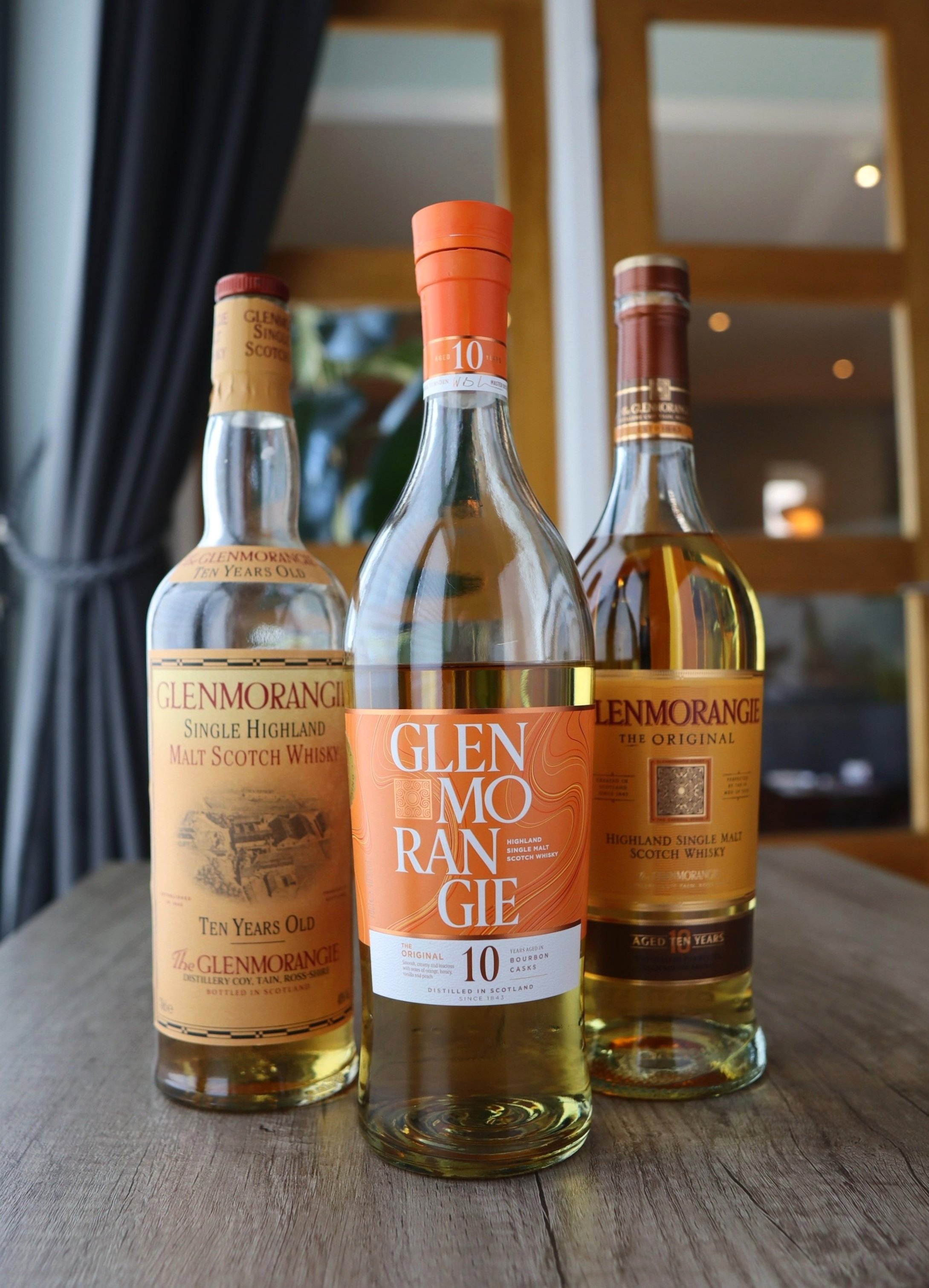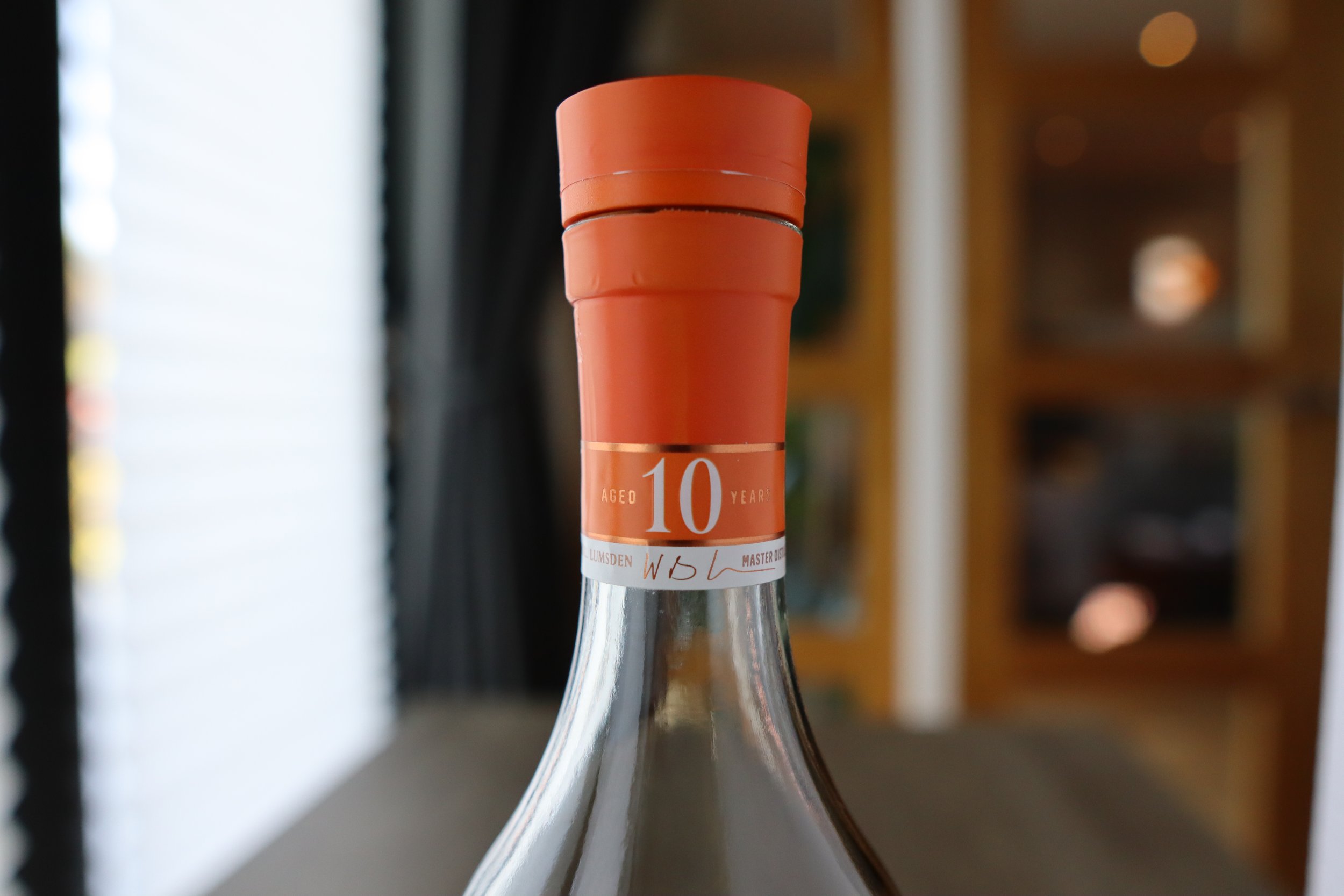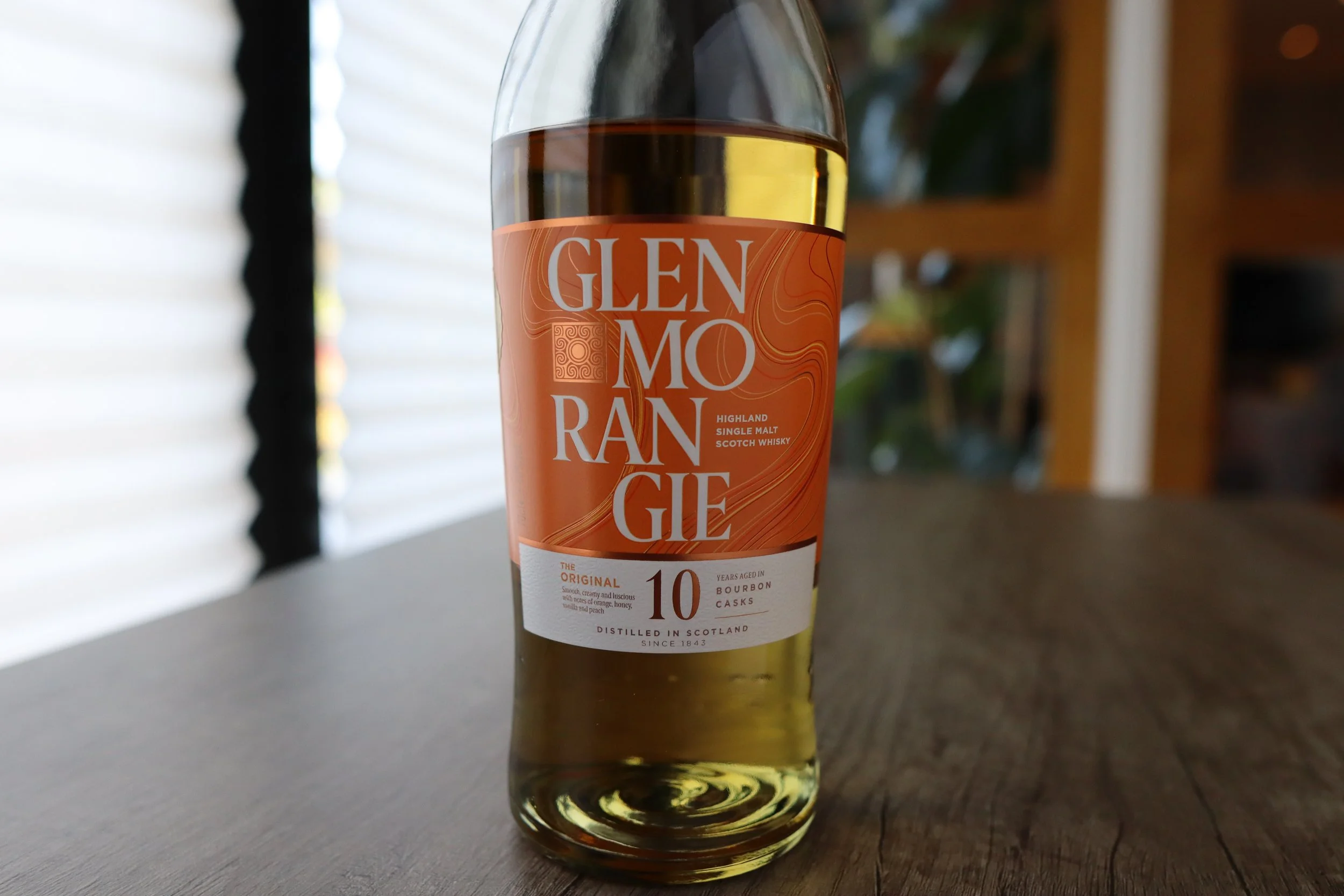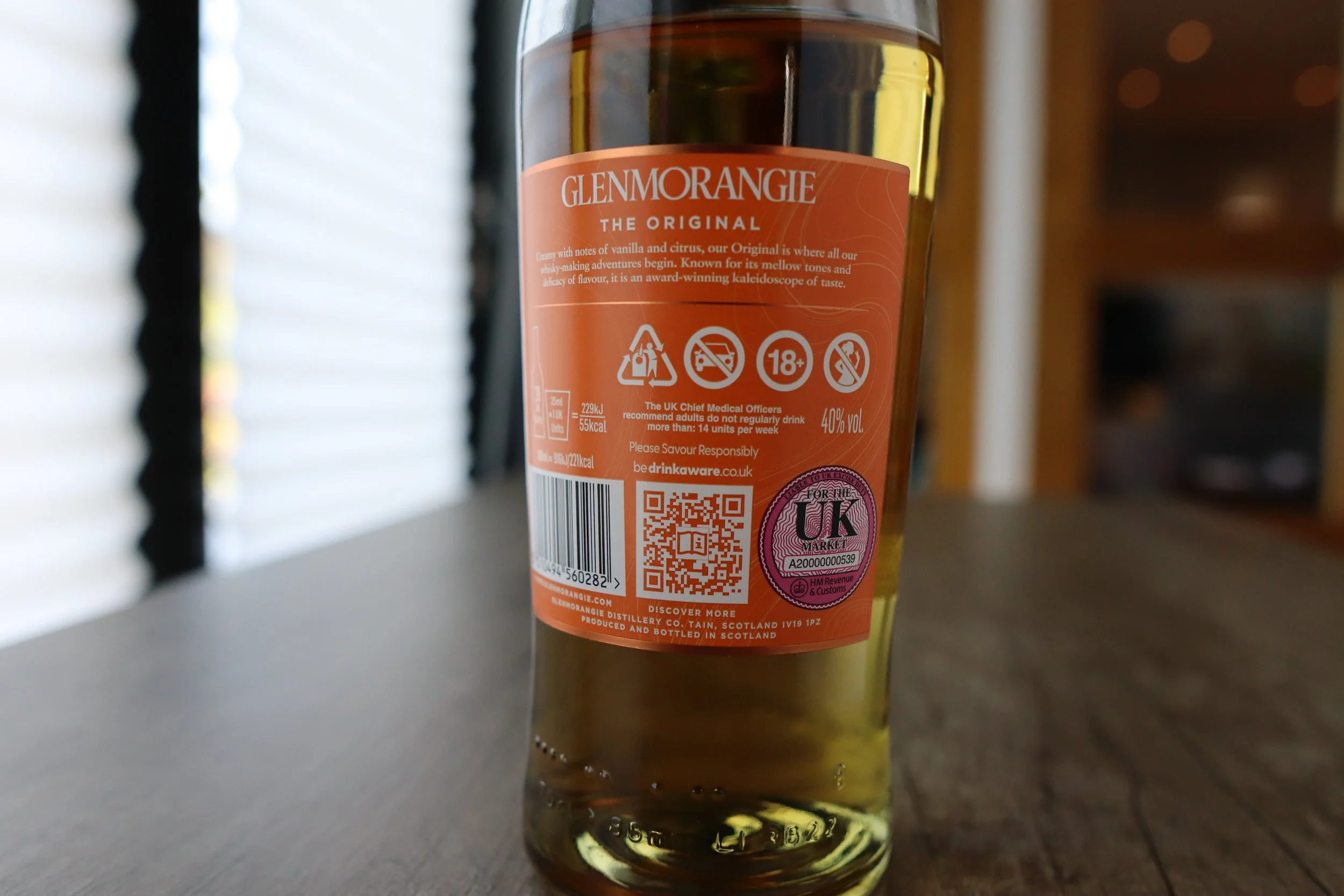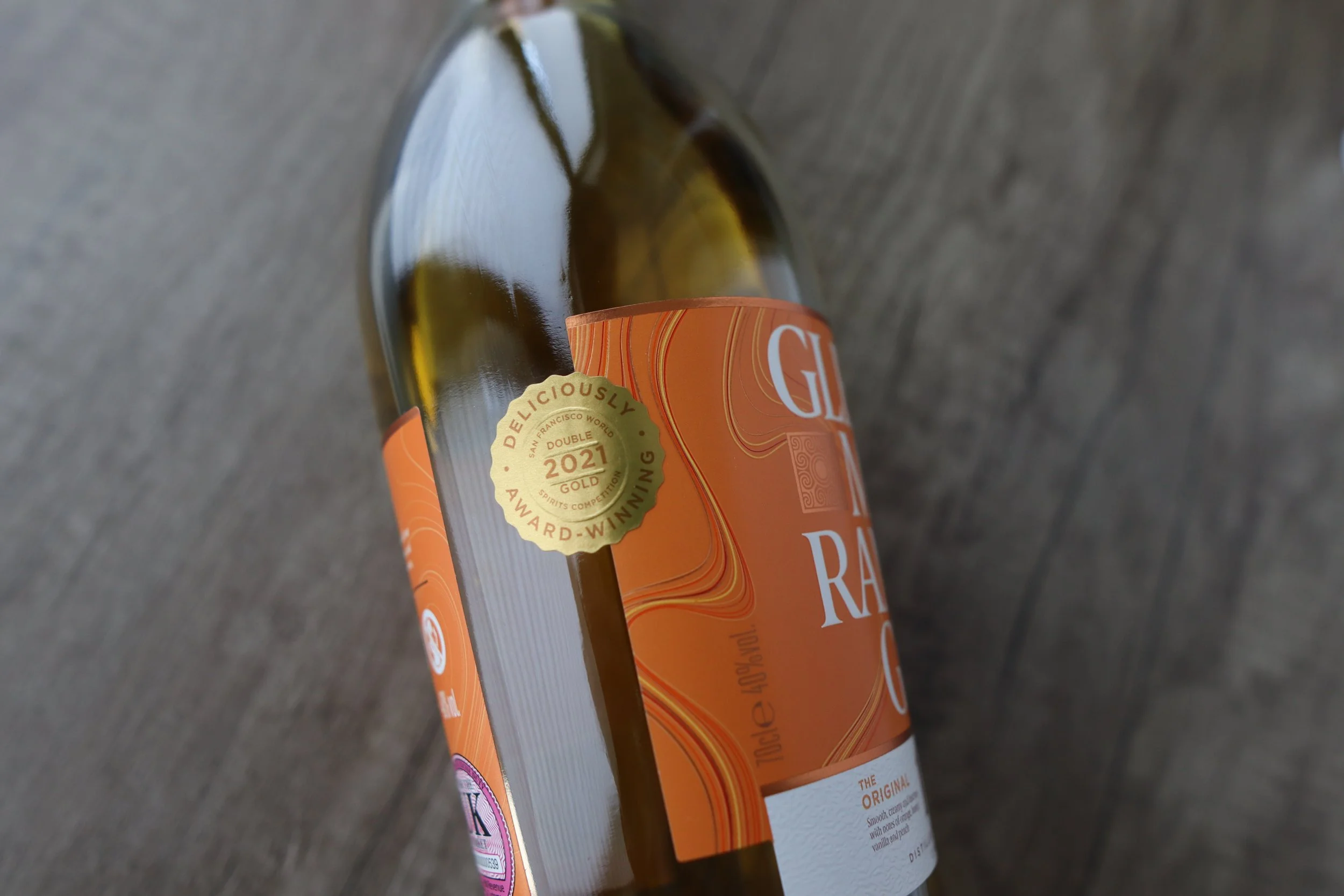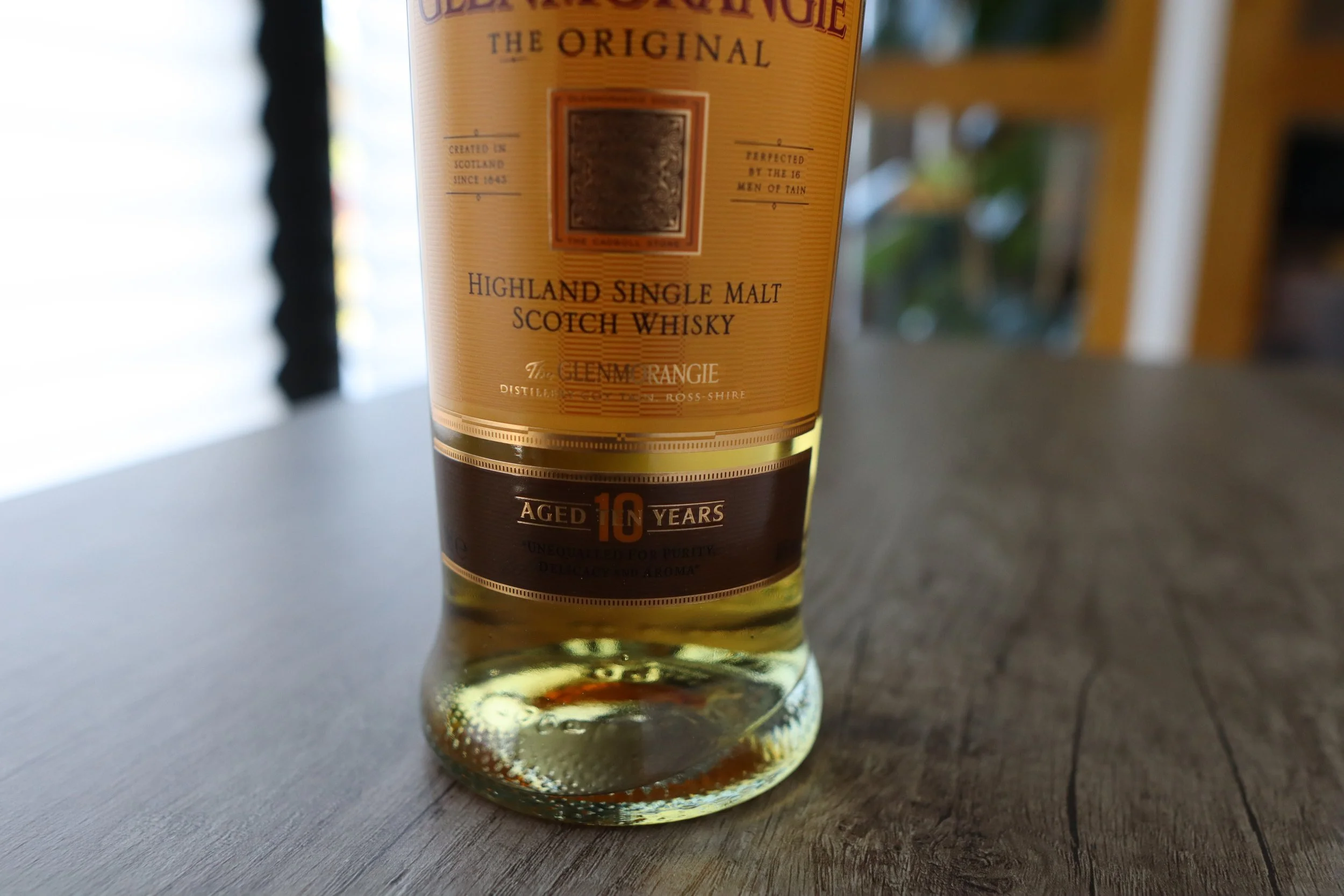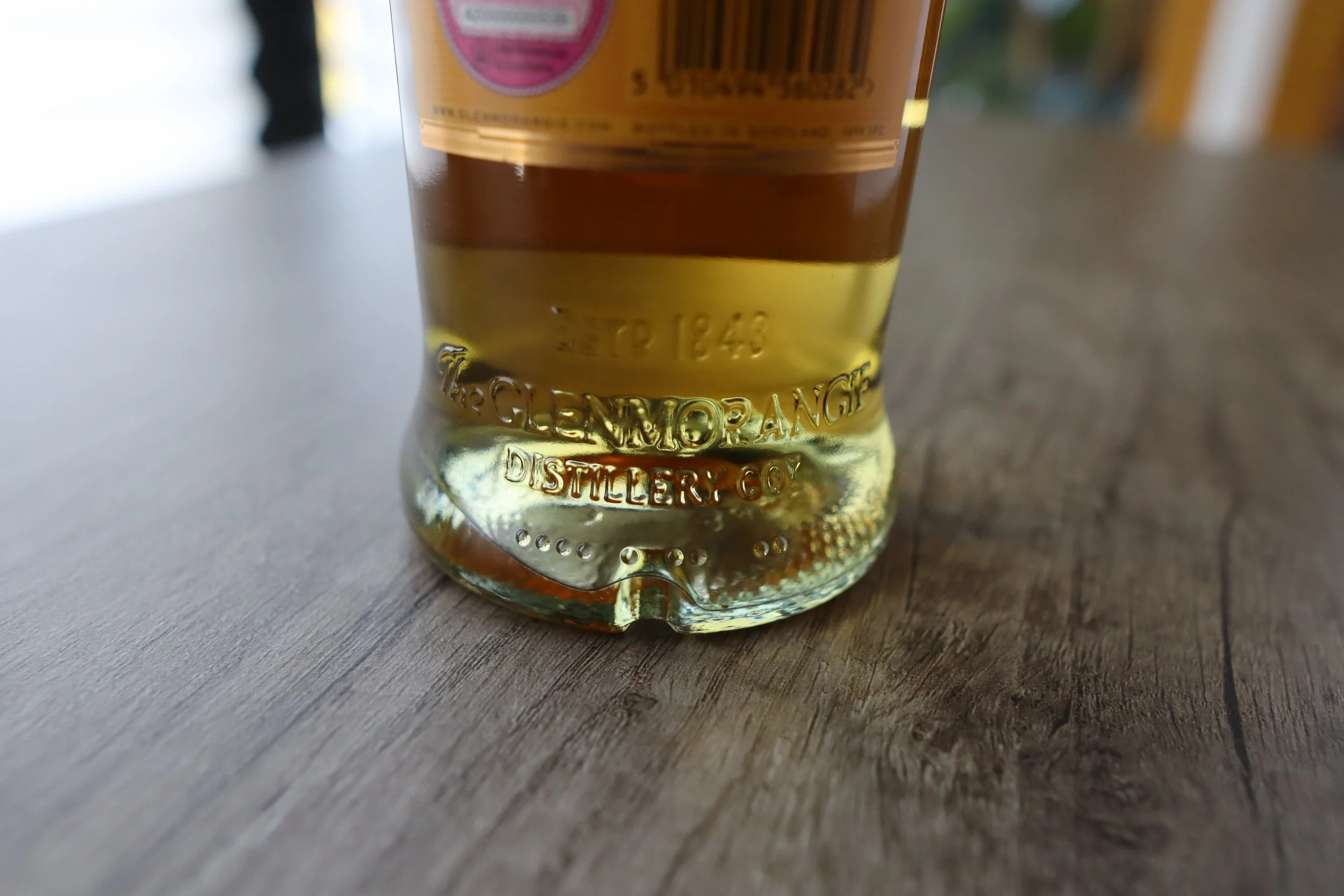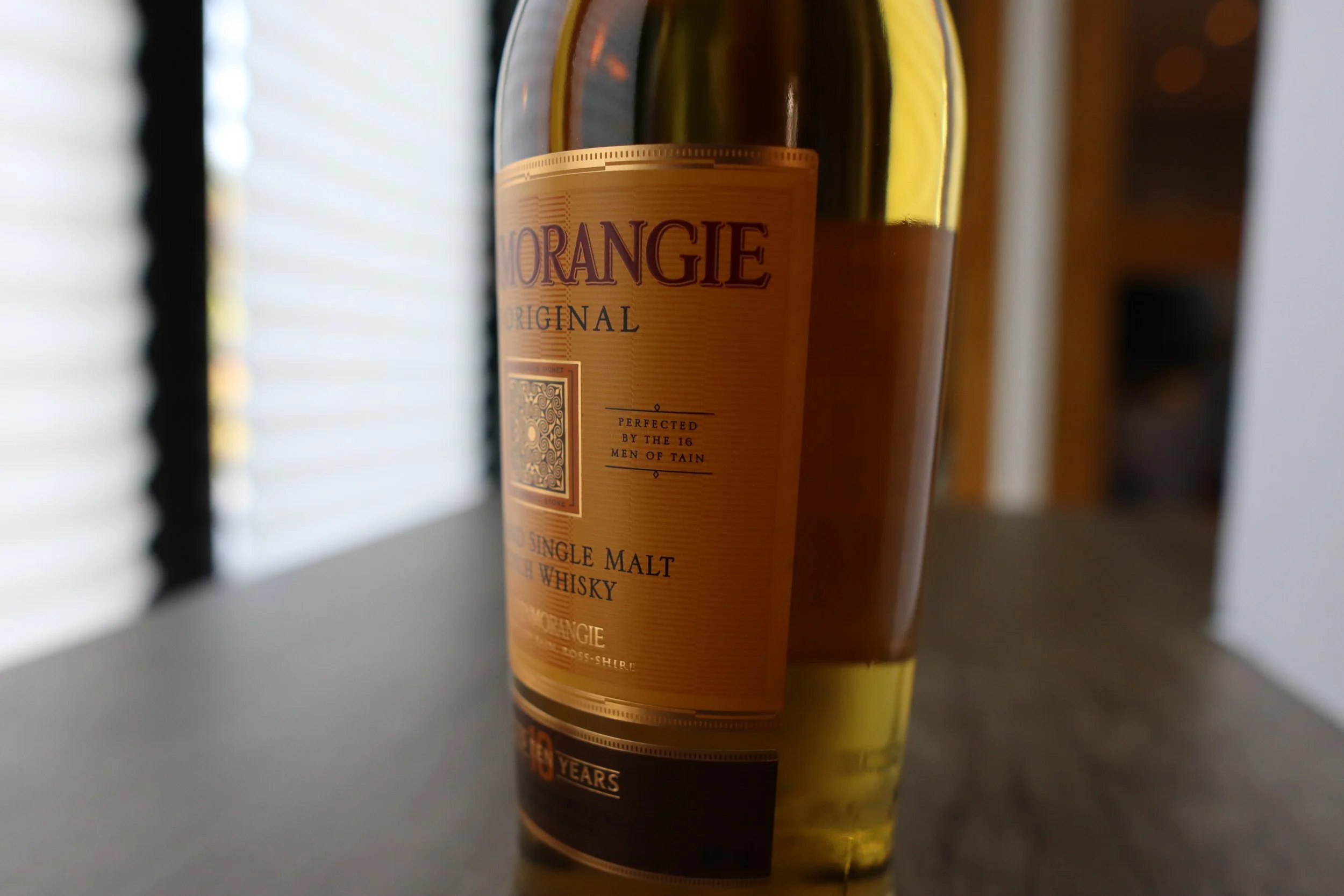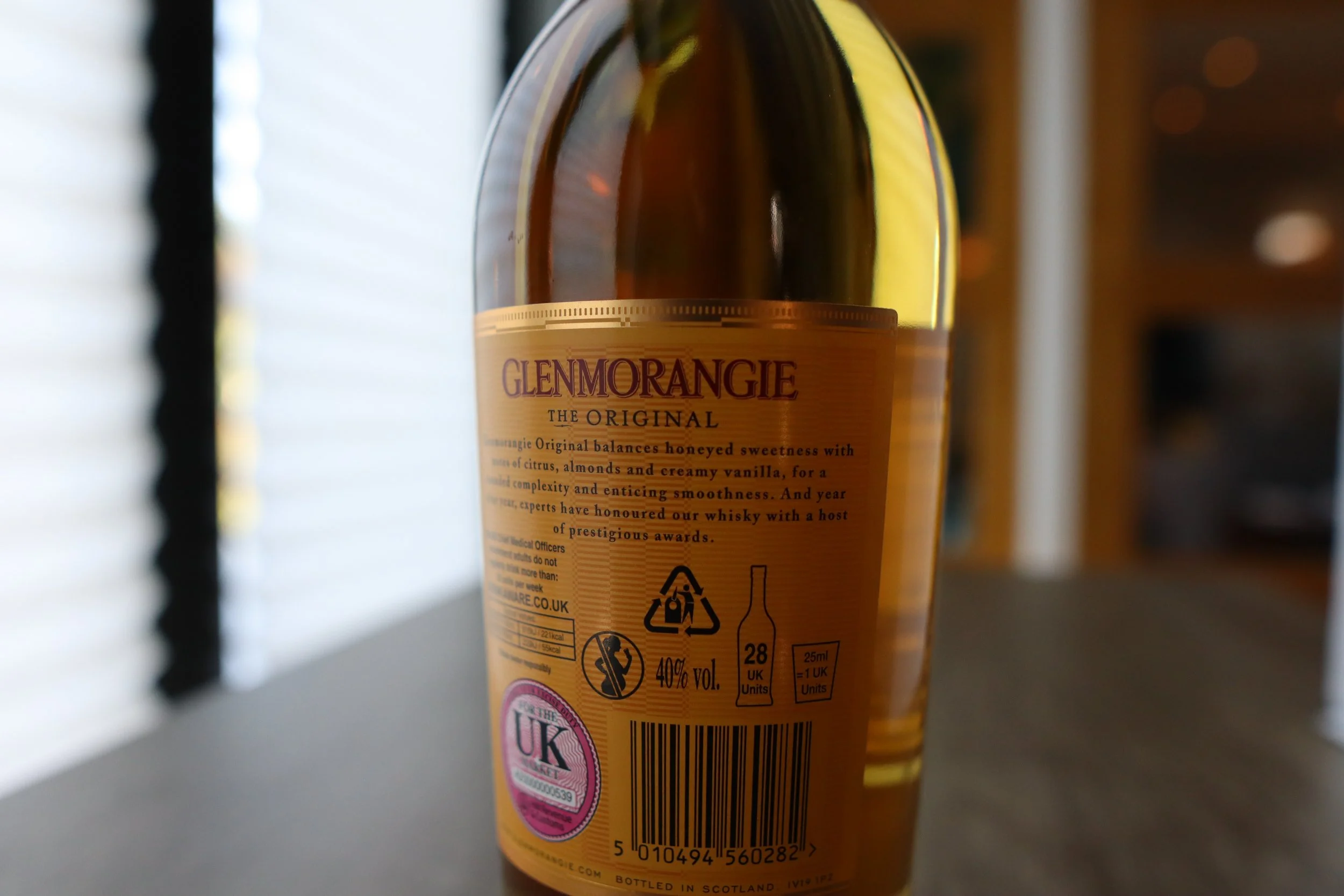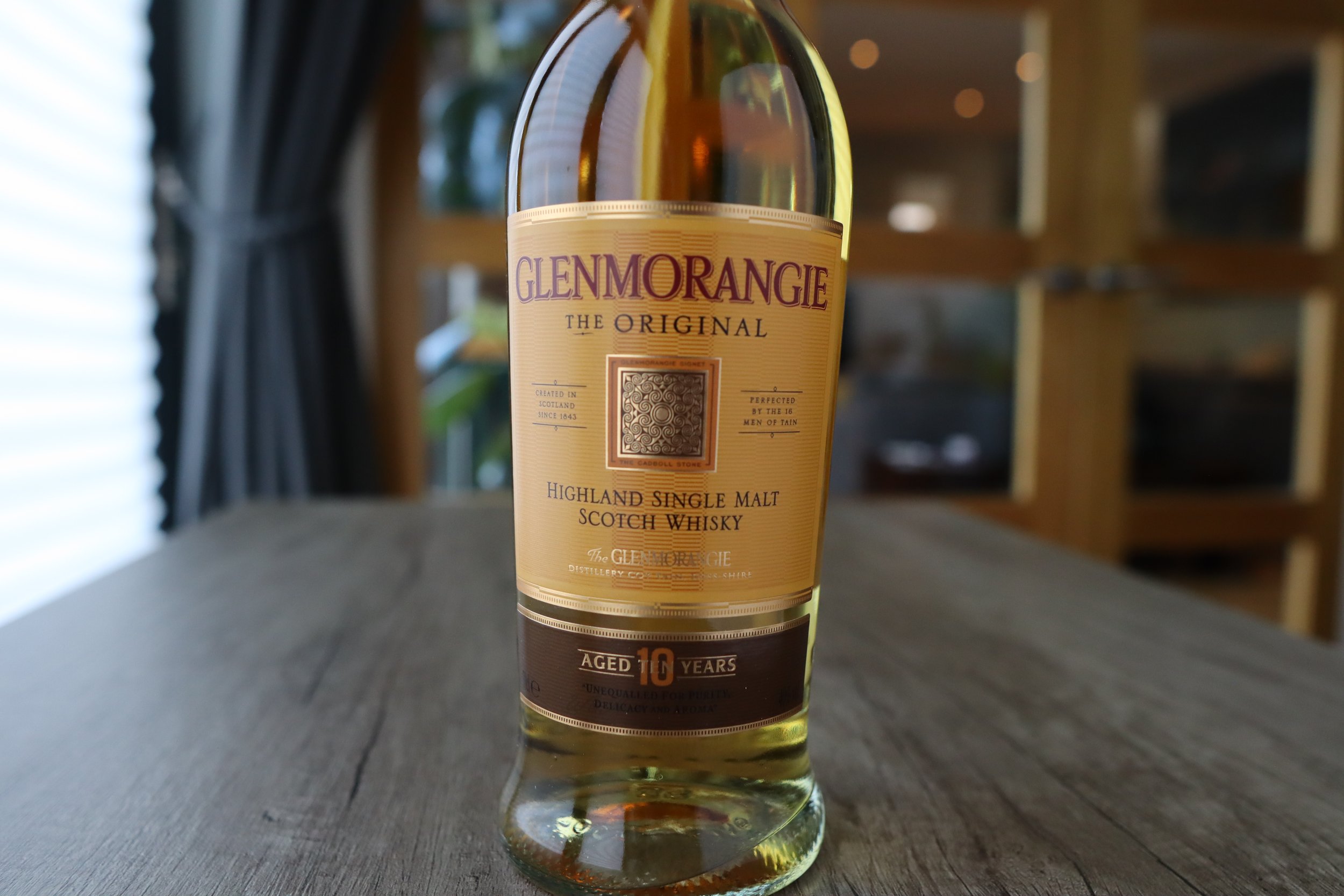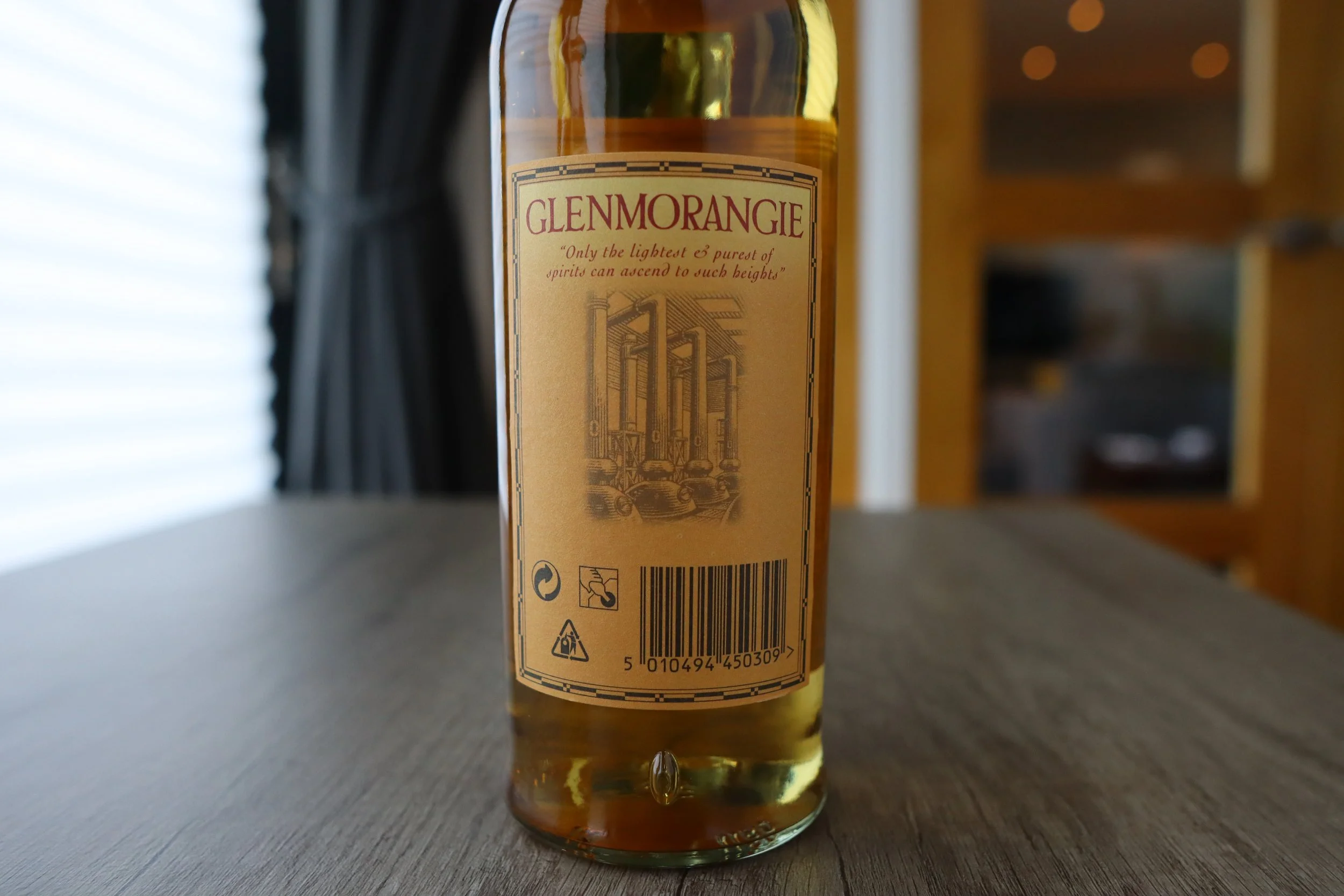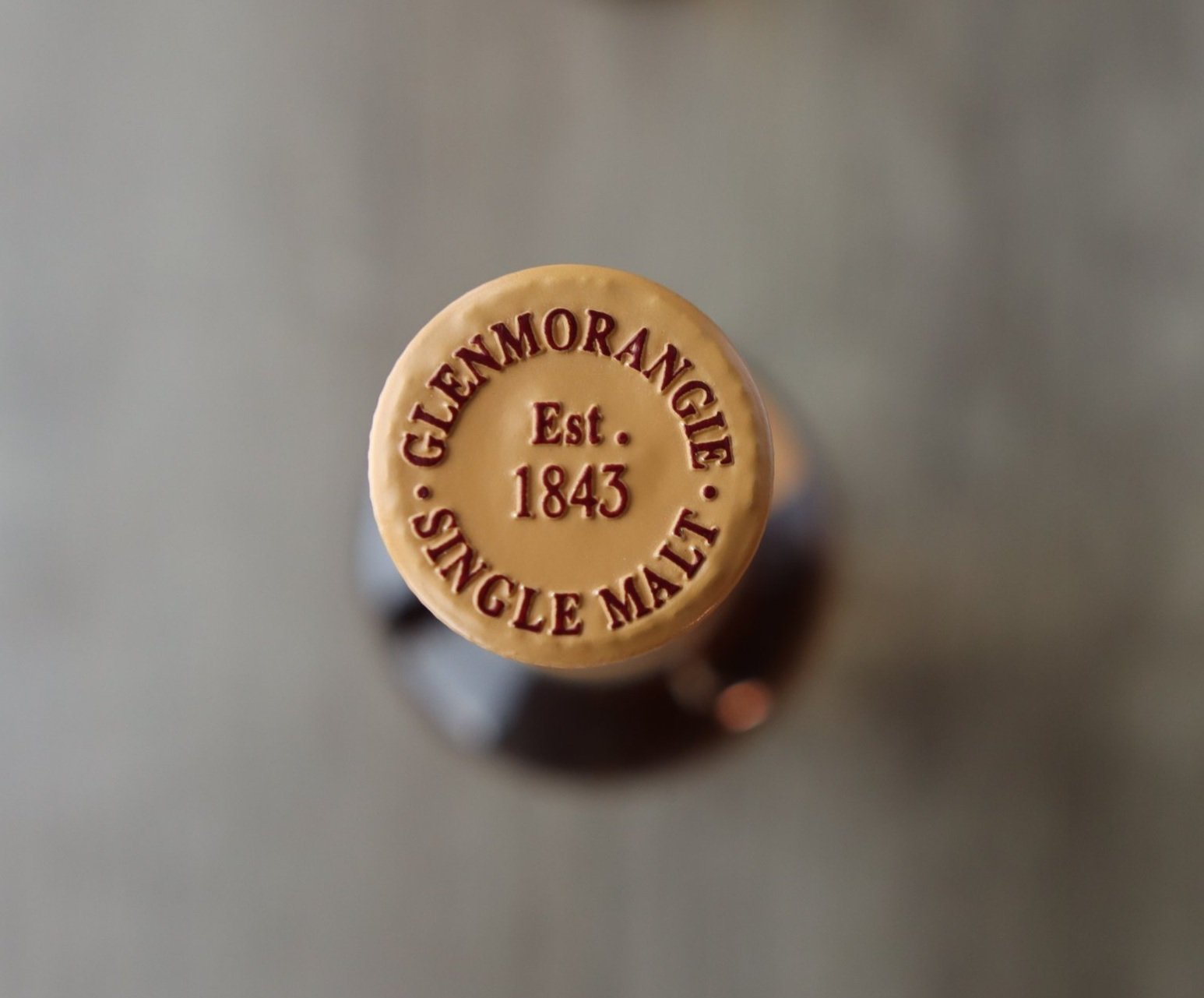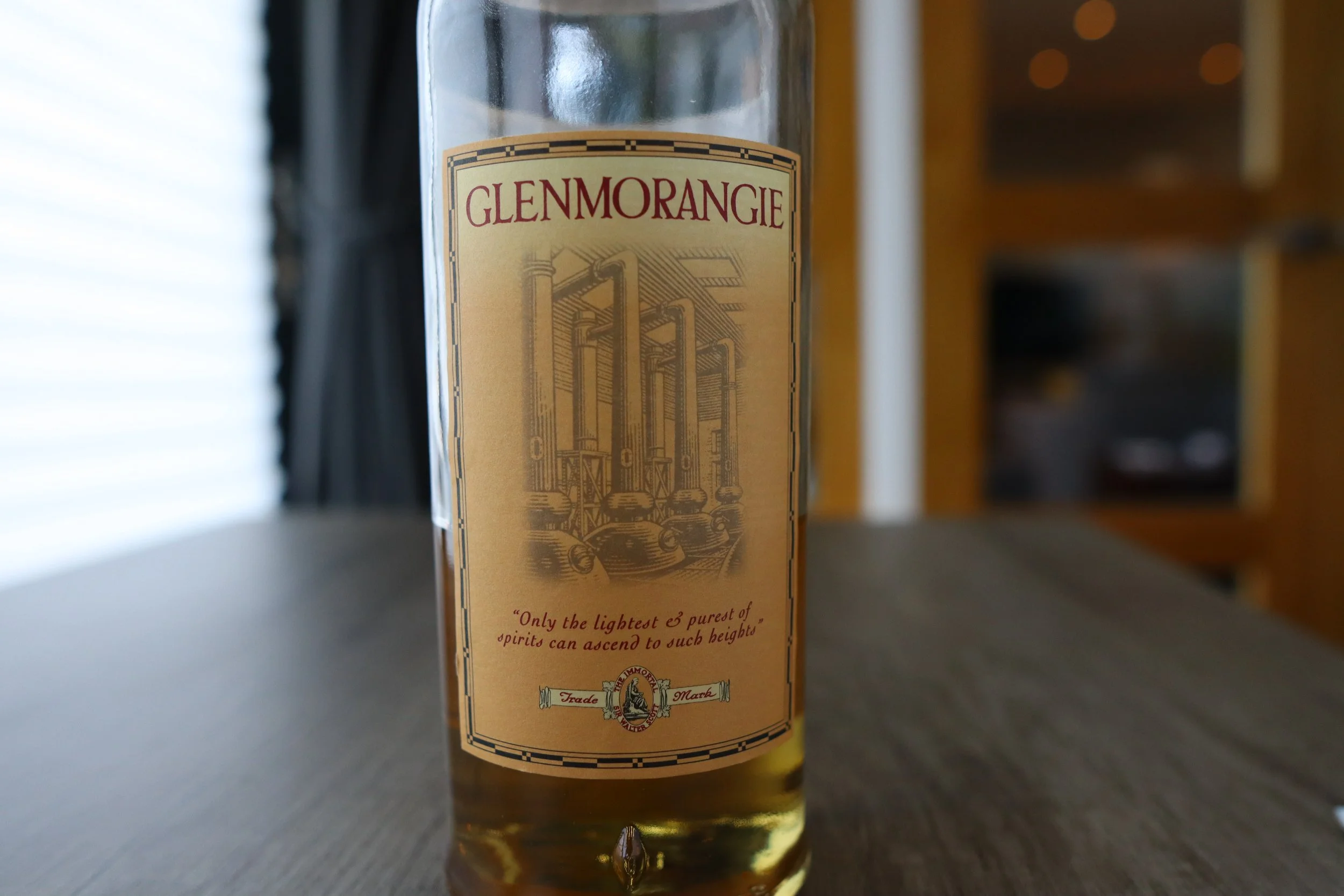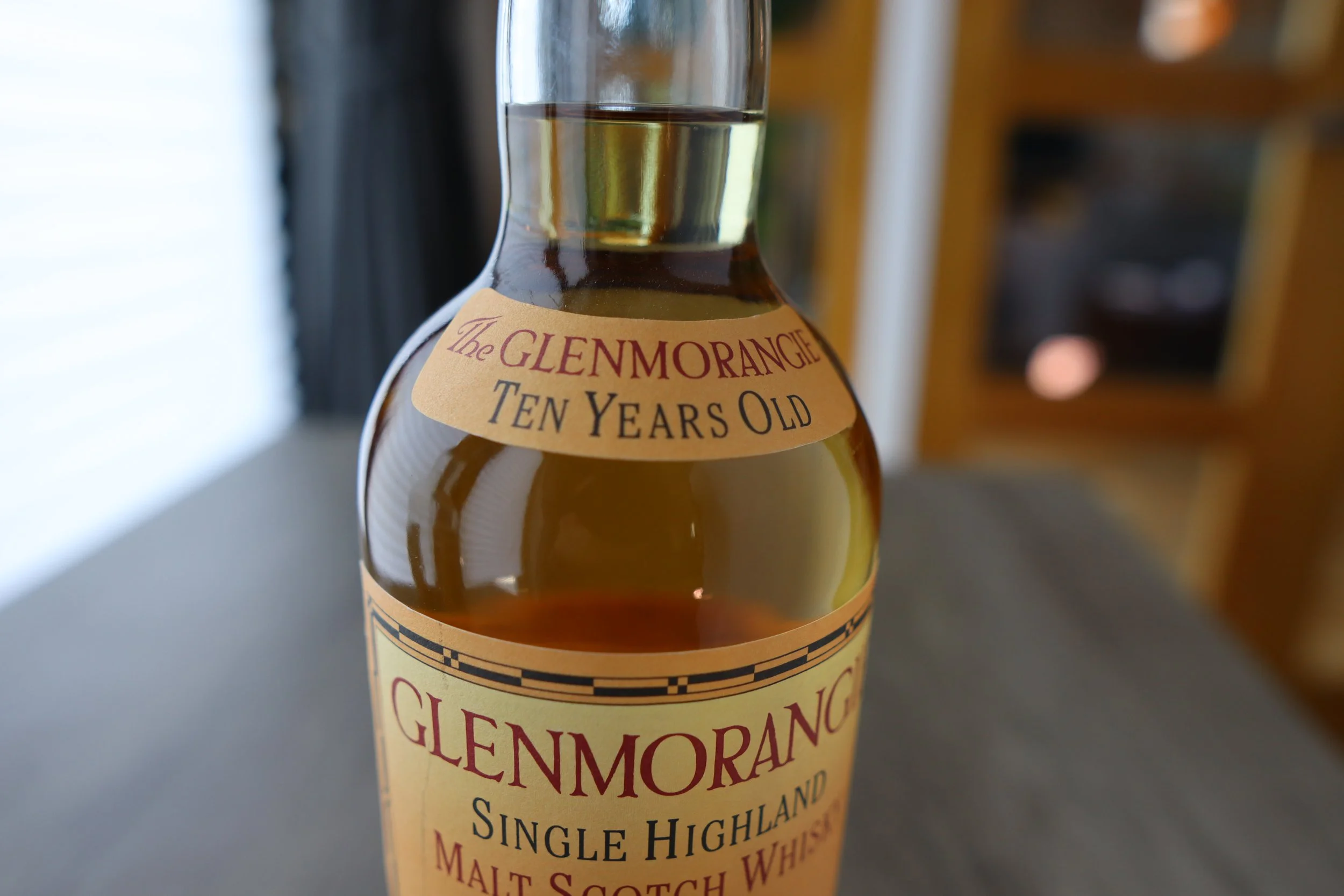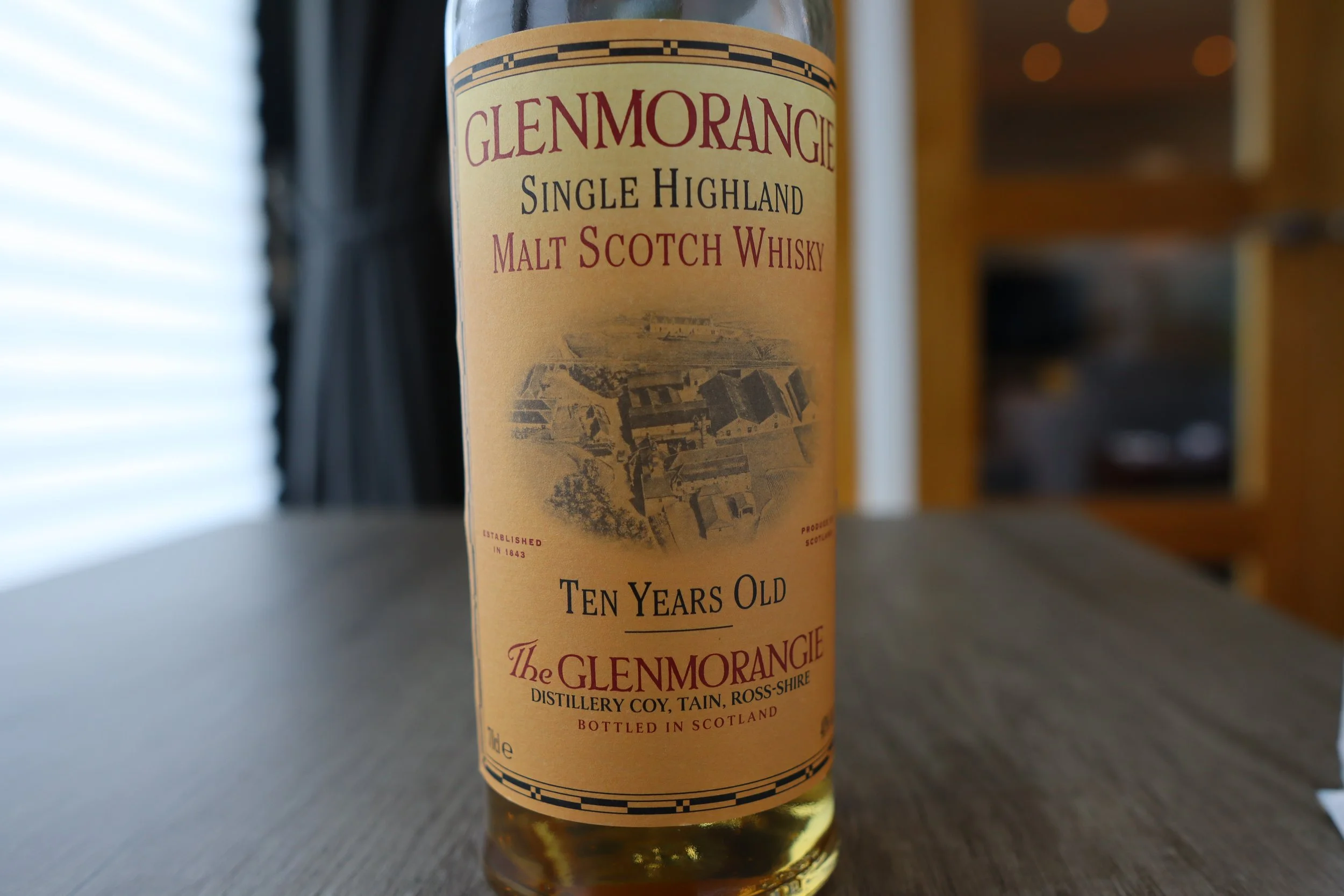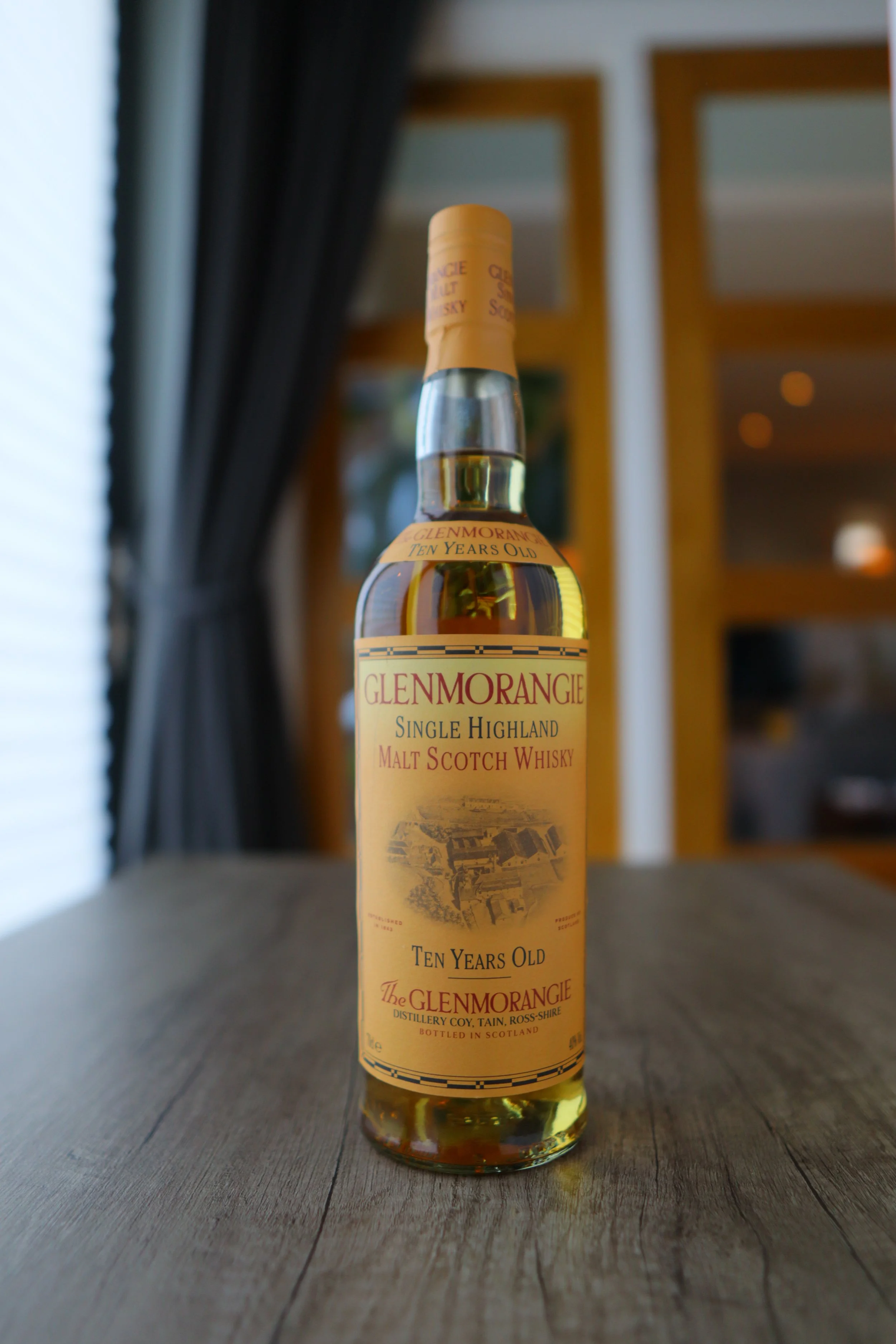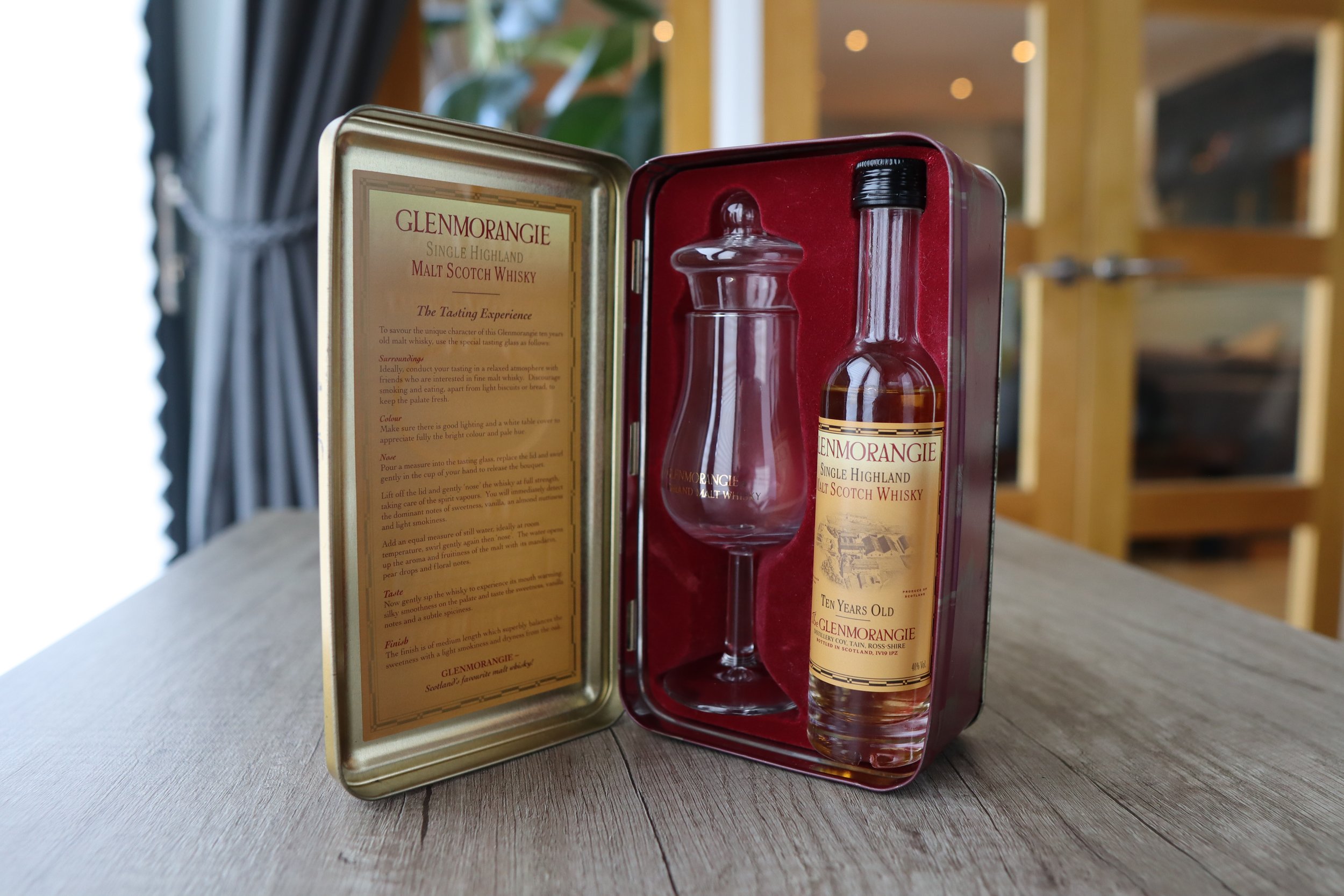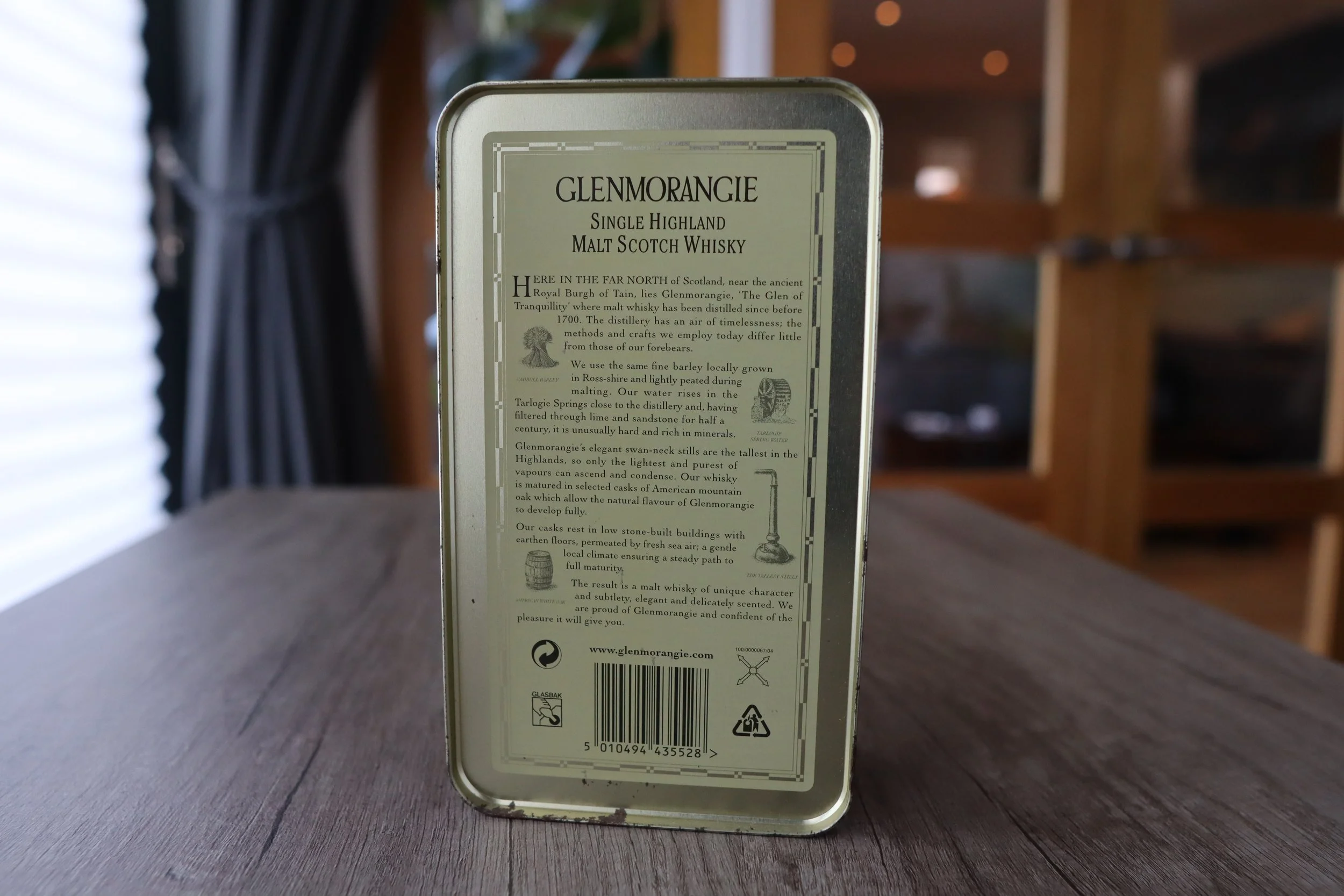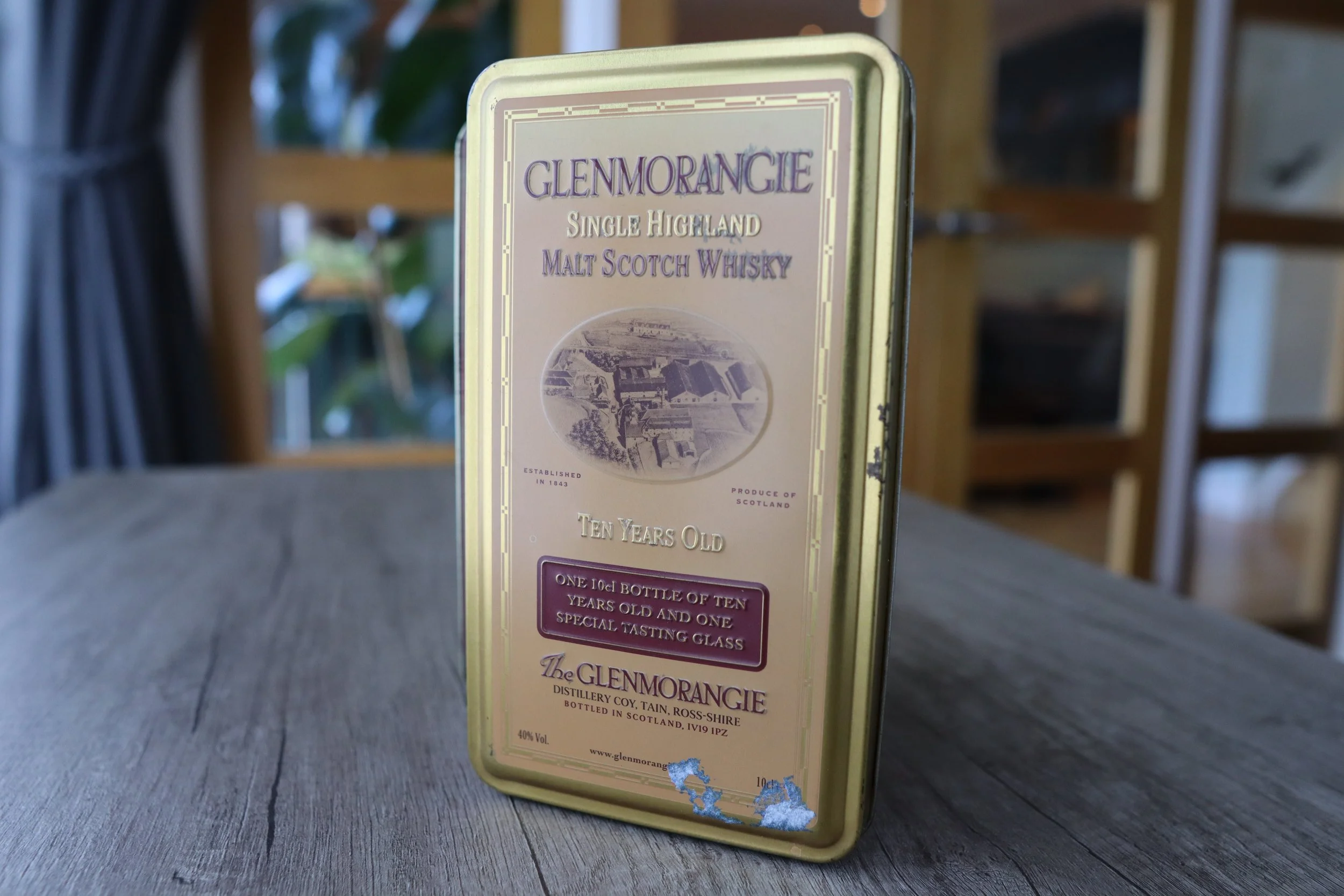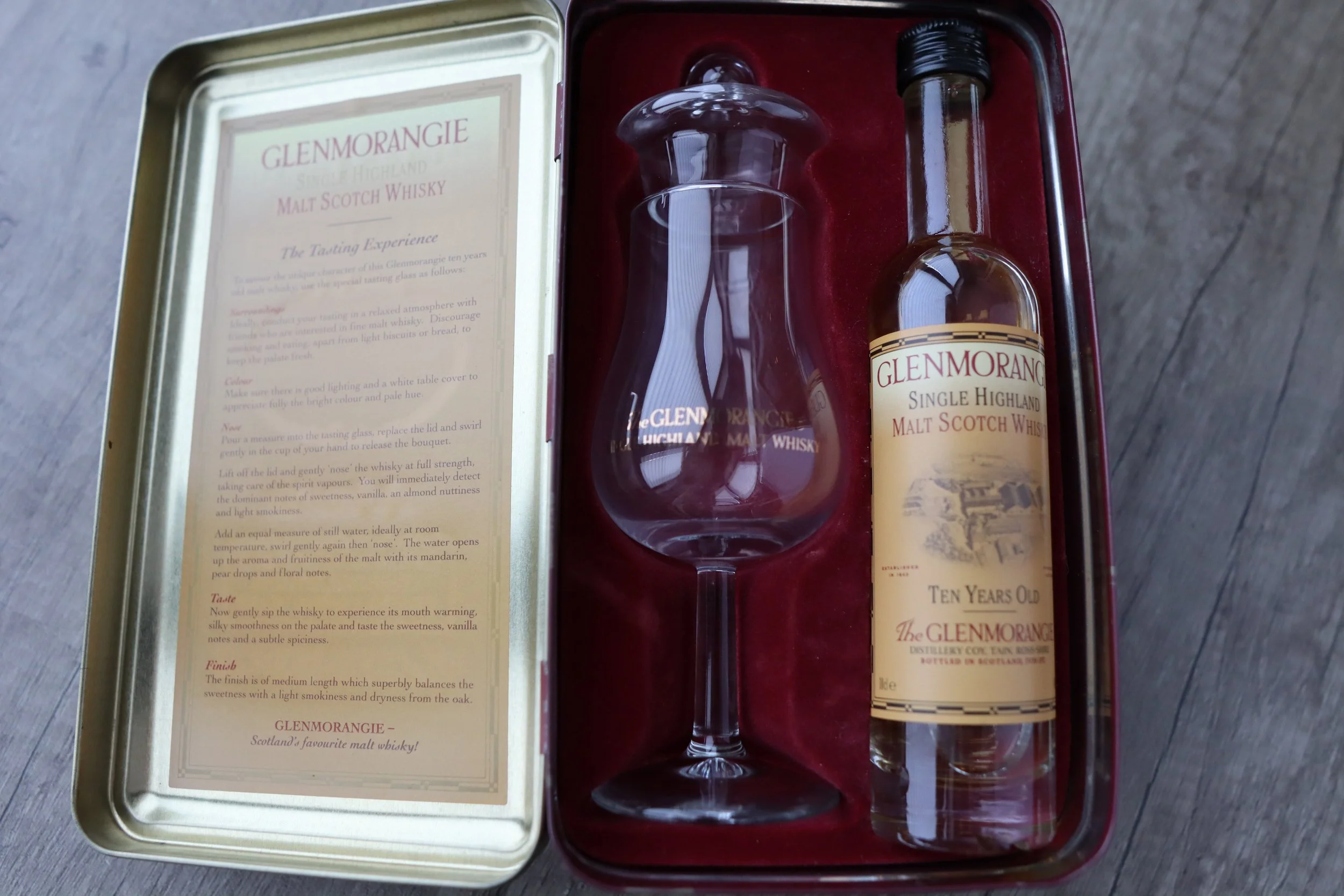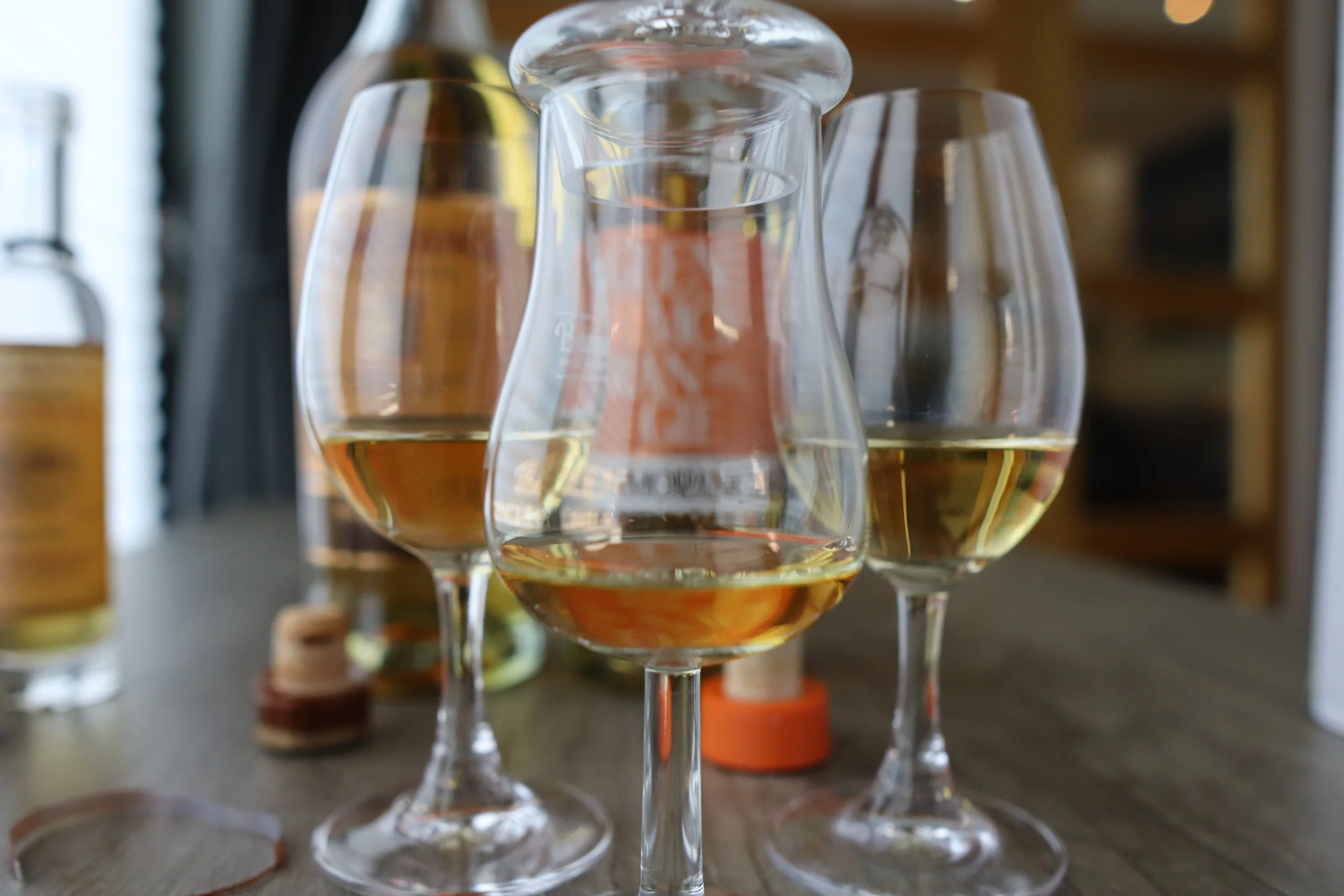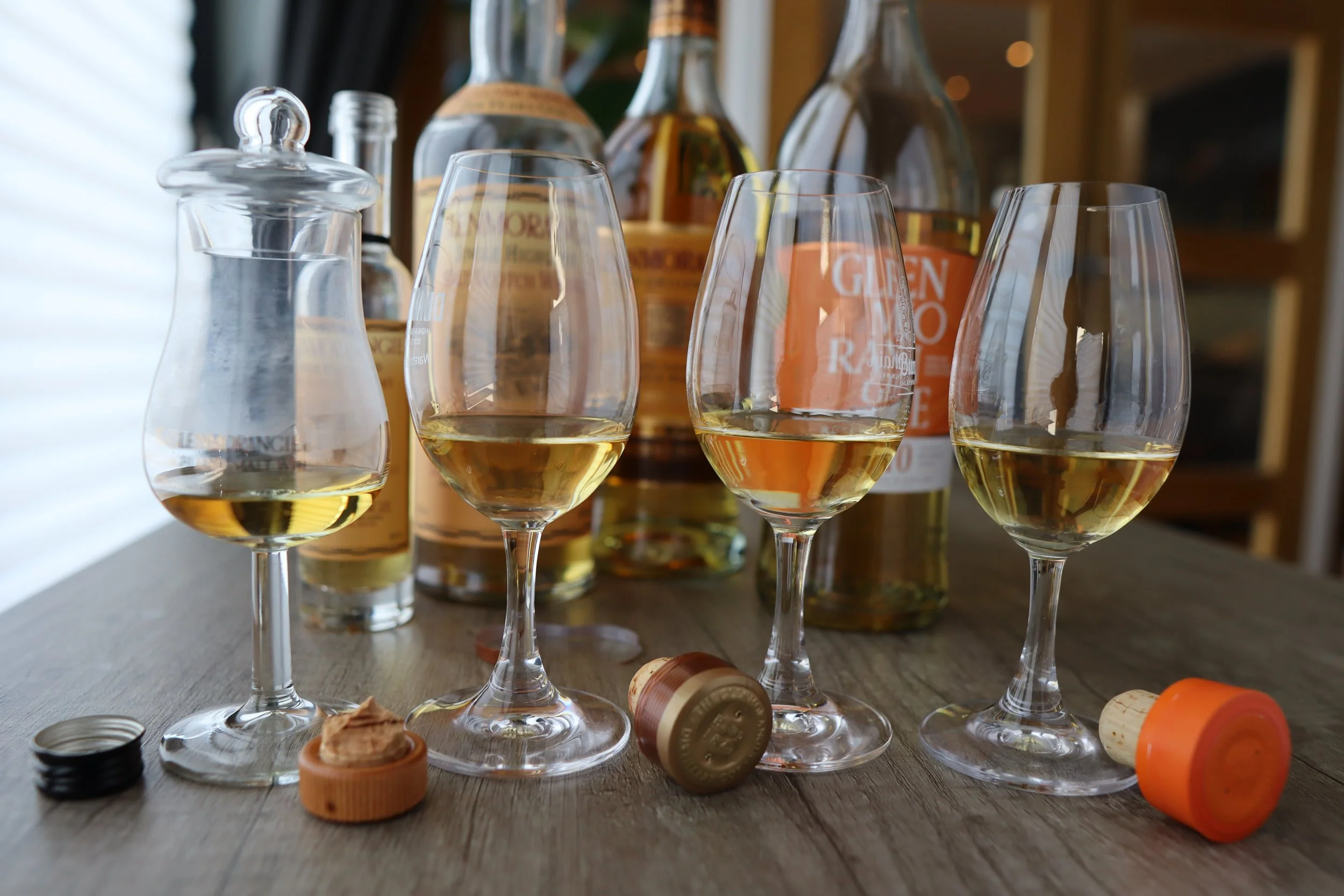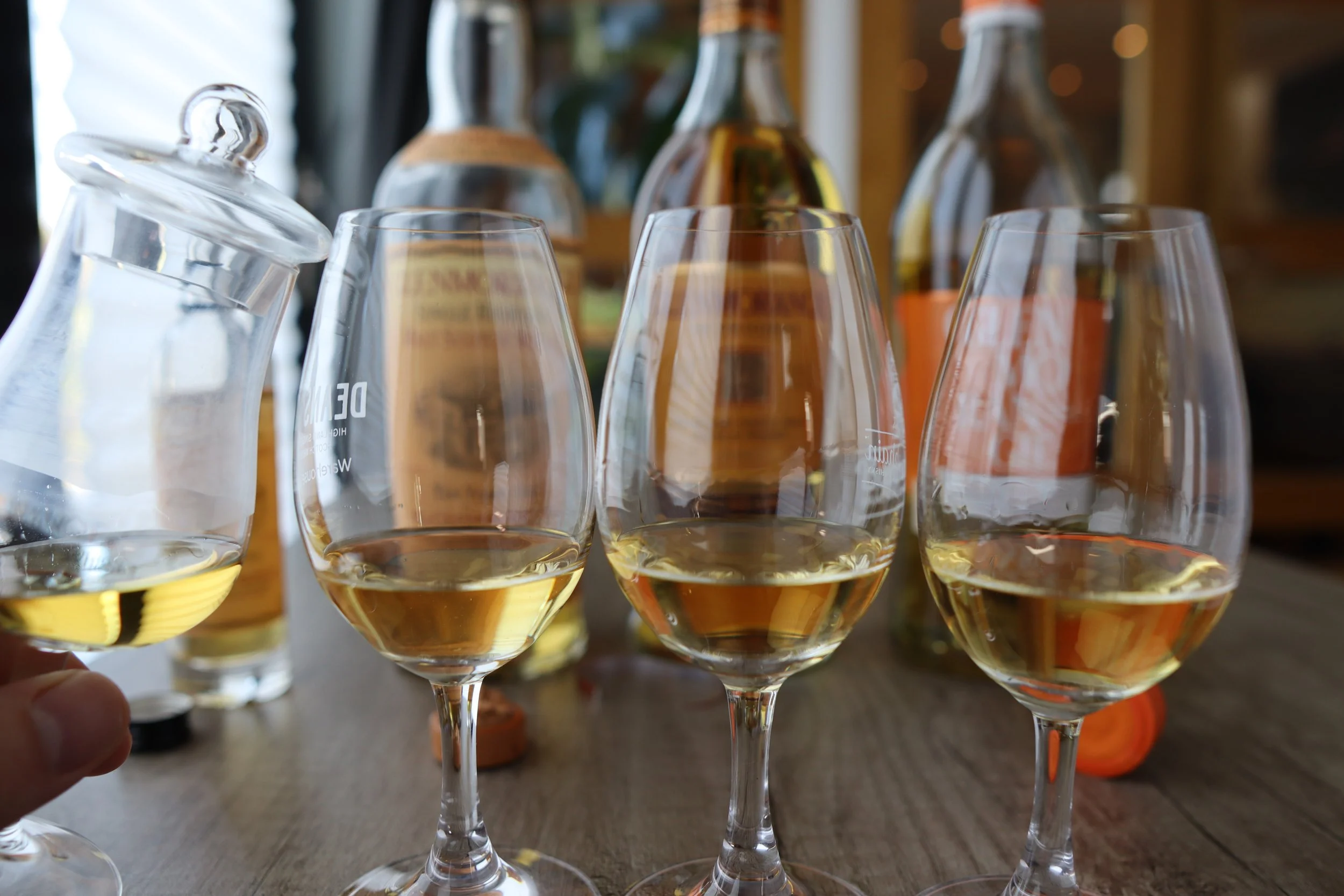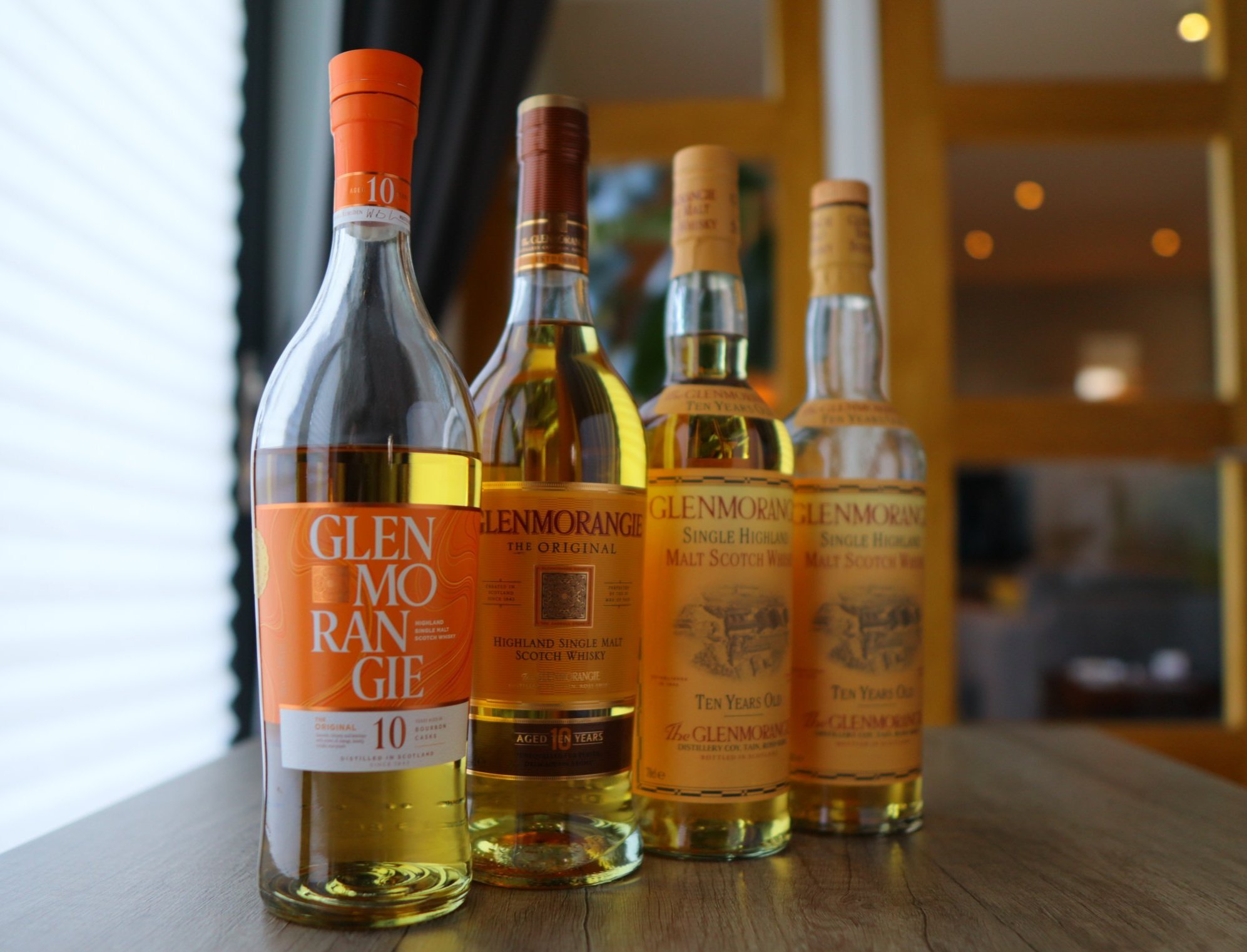Glenmorangie 10yo Then & Now
‘The Original’ Official Bottlings | 40% ABV
Score: 6/10
Good stuff.
TL;DR
Objectively good scotch whisky, if a little light
It’s not about the branding
Let’s get that out of the way first. This won’t be another take on the new Glenmorangie branding, it’s been done. Suffice to say I’m not a fan of the latest version, even though it does become less bizarre with familiarity.
It’s the way the name has been split into those syllables that’s jarring. It may be a clean and modern look and, from a practical shelf-presence perspective, the goals have probably been achieved, but it’s pretty soulless. I’m also cynical that it’s helped anyone better pronounce the brand name, but we’re supposed to place the emphasis on the second syllable; glen-MOR-an-gee rather than the glenmo-RAN- gee. It should sound as it looks; orangey.
Still, it stands out on my shelf in a way I still don’t like. It’s shouty. I’ll leave it to people with a better understanding of the aesthetic side of things to help me understand why I feel this way about it. If you’re after a discussion on such a topic here are two fun WhiskyTube types discussing this and more. Anyway, let’s focus on what’s behind the label.
I remember exactly when I worked out I loved Glenmorangie 10. It was 2017 and I was in a fug over having one of those cameras shoved in a place that cameras shouldn’t be shoved. A minor procedure and hardly difficult, but the concerns that surrounded it were unpleasant, not least an entire day and night only being allowed to ‘eat’ water and black tea. The day after I was back at work and found myself in a modern and glossy hotel in Derby, a town which was on the up-and-up at the time and, I hope, still is. However, the only malt they had on offer was this. Still, I needed to lift my mood and I ordered a pour.
Despite them serving 2mm of liquid in the base of a fat tumbler I was pretty content nosing it. You might be surprised at what you can access nosing from a tumbler, while those flavours and aromas are dissipated in a way that’s not ideal for serious analysis, the ethanol is also dissipated; you can get your phizog right in the glass and swim in it. As I approached the bar once more, ordering a double this time, I realised a couple of things: There aren’t enough exclusively ex-bourbon matured malt whiskies on sale, and also that I love the profile on offer from Glenmorangie’s 10 year old.
I had some at home, including an old vintage bottle, but I’d been ignoring them. I sat in the bar in utter contentment hoping my colleagues wouldn’t show. They did. It was fine. One enjoyed a glass with me while they listened, wide-eyed and horrified, to stories about where cameras may go when you’re middle-aged.
Since then, this has been a permashelf bottle for me, it’s always here in some form. Indeed, I usually also have a vintage bottle hanging around too. There was a time when Glenmorangie was the best selling single malt in Scotland and, even if it’s not today, it’s still ubiquitous and there are lots of these antique bottles kicking around for not much money, especially on auction.
It was the best-seller for a couple of reasons, in my opinion. It was always available, it was consistent, and also pretty delicious. It was sweet and balanced, and always had a creamy pineapple-and-peach-forward burst of fruit to welcome you in, with a light and fresh acidic tang on the finish. It was clean, easy and inexpensive. Even when so many of its shelf-mates lost their age declaration and, through the 2000’s and 2010’s, went NAS, Glenmo stuck to the 10 year age statement. This is despite them being smaller than Edrington, Pernod, Wm Grants and all else who played the low-stock card. Kudos to you, Glenmorangie.
So, how good and how consistent is it, actually? Well, I thought I’d just review the latest expression but all the while compare it to bottles from the past. I currently have a bottle open which hails from the late 1980’s or early 1990’s; no barcode but 70cl. Also a wee bottle from a gift set that I have open from the 1990’s (allowing me to keep one of my older bottles sealed - it’s the same 1990’s era) and I’ve cracked a previous branding bottle from around 2020 to sit alongside a purchase from earlier this year. So, four different bottlings over three or four decades.
Before I get to the review and comparison, I do want to take the opportunity to have the obligatory Wally Whinge. I know it’s tedious and I need to make more efforts to keep things positive, but what’s the point of review sites that don’t pose questions and critique, eh? So, here goes…
Seriously, why aren’t there more core releases out there that are made up of purely first-fill and refill ex-bourbon casks? Glenmorangie were pioneers with this wood, they discovered early on that actually, and I won’t hear it any other way, it’s the best vessel in which to mature scotch whisky, period - if you have the time and don’t rely too much on that ‘first-fill’ bit.
Have a think and shout out those you know of… Deanston 12 and Deanston 18? Yes. Delicious. Ummm… struggling now. AnCnoc 16? Yes, gorgeous but discontinued. Glencadam 10? Yep, almost perfect. And their 18? Sure, but have you seen the price - they really don’t want us buying that for some reason. There’s still the 15 which is also loved. But all of a sudden, we find ourselves in a cul-de-sac of limited choice. Weird, because of the 22 million casks currently being matured in Scotland, it’s likely that around 20 million of them are ex-bourbon American white oak (at some point in their lives) barrels and hoggies.
We know from independents releasing small-batch and single casks that, especially when they’re not too heavy-handed with the first-fill thing, these casks let the fresh fruit shine while bringing a creamy elegance and balance that makes you glad you found whisky. It’s not the only track in the jukebox, sure, but it’s the one that gets Wally tapping his feet. I’d love to see more of it.
Glenmorangie has been dedicated to the style for five decades and it’s damn good. The 40% ABV thing? We’ll get to that in the dregs.
Review
Glenmorangie 10yo, Official bottling, latest branding, 40% ABV
£35-40 often on offer, available everywhere.
I’m going to concentrate on the latest release, and from there I’ll summarise how the other, older labels compare. The previous label may still be the one on the shelves where you are.
Score: 6/10
Good stuff.
TL;DR
Objectively good scotch whisky, if a little light
Nose
Malt floors and hayloft, with a bright, outdoor freshness. Pineapple cubes and tinned peach, a touch of chalk and minerals, limestone, camomile and cut flowers.
Palate
Light arrival with a touch of creaminess, a little sweet orange before the pineapple and slightly tropical side flashes, but briefly, with sweet apple turning to a soft white pepper spice and some very light acidic tones. A little saccharin remains after a short to medium finish.
The Dregs
First up, the two most recent bottlings are remarkable in their similarity. To the point, they’re pretty much identical. The only thing to set them apart, maybe, is the older branding being a little more muted, but we might put that down to a neck-pour. I left it for a while in the glass, but it remained a little drier, a little more closed than the slightly more expressive brand-new bottling. Still, almost identical.
Next up, it’s not fair to compare these two modern bottles with those of 30 or so years ago. Not only because there has surely been significant changes to the process and handling of things, not to mention a different barley strain, but they’ve also had a long time to sit in a glass bottle and mature. Yes, whisky only legally matures in oak, but whisky is chemistry and it’ll do what whisky does - wherever you put it. Not in the same way or at the same pace, but you bet your life it’s changing.
Flavour drift is something we get to appreciate in whisky, it’s inevitable and often very apparent. Stability, of a sort, is one of whisky’s intrinsic elements; it’s details recorded for posterity in tall cylinders of light which, when opened, allow us to wallow in faded snapshots and nostalgic cine footage of the past all the while enjoying the vivid clarity of today’s 4k. It’s flawed, but fun.
Still, I’m drawn to the depth and richness that these older expressions bring; there’s more roundness, fullness and ripeness to the fruit, more heightened tropical notes with mango thrown in the mix and, where the modern sips have that acidic lick, in the older bottles it’s a waxy creaminess that’s almost decadent. It’s like comparing floor-maltings to drum, dunnage to racked, worm-tub to shell and tube, it’s ultimately academic and often nebulous. Except, with these, you can actually taste a difference. Where that depth comes from we don’t know, but we know where it leads us; to a belief that whisky was better in the old days. And for many, that may be so.
As the comparison between glasses continues, the older bottles begin to separate a little, some added definition comes in as they air and stretch, the wee bottle creeps from a 7/10 to an easy 8/10, I’m tempted to pour another, but tonight is supposed to be a dry night.
The 70cl bottle tries to follow but perhaps only makes a 7/10. Maybe, on another night, it could also be higher. They’re excellent, tropical, clean, waxy delights.
That said, the faithfulness the profile of the modern bottlings have to that which exists in the vintage bottles is remarkable. It is striking in its consistency. It remains one of the few mass-market, 40% ‘supermarket’ bottles I’ll happily buy. It is of high quality and very easy to enjoy. But for one thing…
You know what’s coming… if only the blah ABV was a wee bit higher the blah natural blah non-chill-filtered blah. You know what I believe in, yet this could be one of the best examples of why it should be so. This would be simply epic if it was natural and 46% ABV plus. I hope one day soon, we have a higher ABV or (dare I suggest) core-release, cask-strength version of this. I bet it’d make the permashelf too.
Look, as proved here, it doesn’t prevent us enjoying the whisky, but experience tells us there are too many beautiful things often left on the cutting room floor, even in 2023. Things like mouthfeel and flavour delivered through a higher ABV. Things are different today, there’s less drinking and more savouring, and the whisky needs to be able to pivot and move with those changing desires, even though the profile and style might happily stay the very same.
Do it Glenmorangie. Your past is enshrined in glass, nothing to do but glance back, take pride, then look ahead and wonder where to go. Perhaps embrace a future enabled by that fruity near-perfect profile, and dial it all the way up to natural.
left to right; 2020’s, 2010’s, 1980/1990’s & 1990’s
Score: 6/10
Tried this? Share your thoughts in the comments below. WMc
-
Dramface is free.
Its fierce independence and community-focused content is funded by that same community. We don’t do ads, sponsorships or paid-for content. If you like what we do you can support us by becoming a Dramface member for the price of a magazine.
However, if you’ve found a particular article valuable, you also have the option to make a direct donation to the writer, here: buy me a dram - you’d make their day. Thank you.
For more on Dramface and our funding read our about page here.

